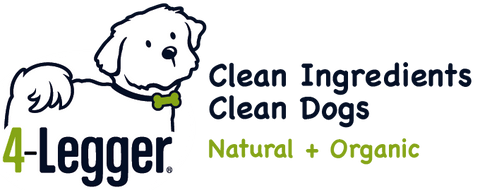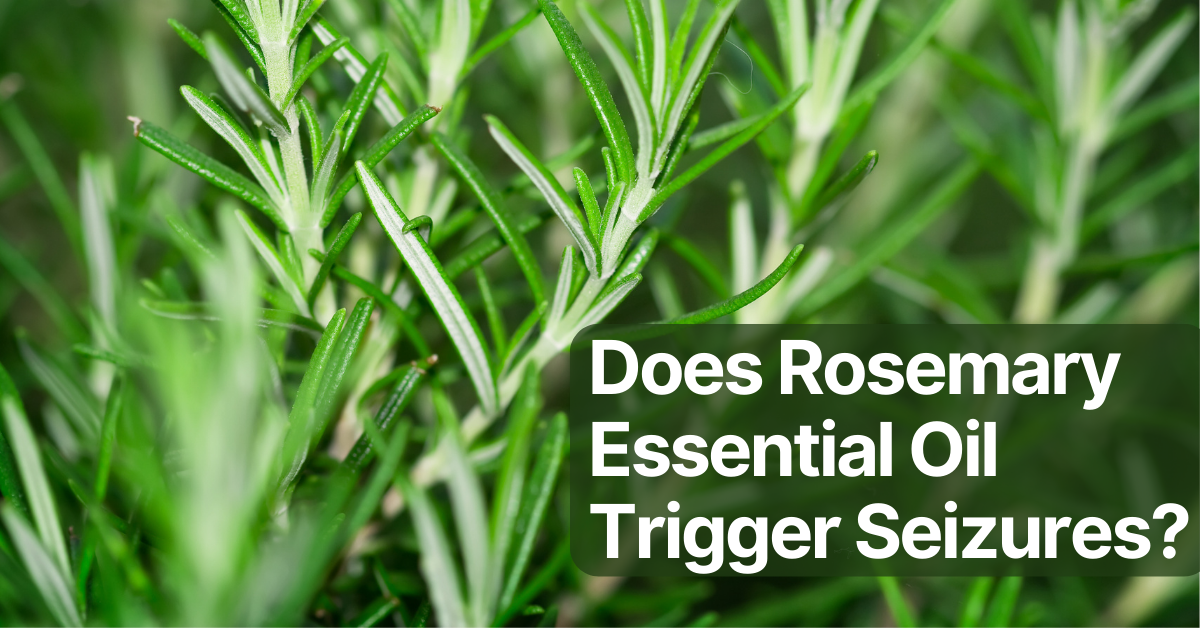Does Rosemary Essential Oil Trigger Seizures When Used in Dog Shampoo?
This past week we received an email from a customer who had concerns about the use of rosemary essential oil in our shampoos because her dog has a seizure condition.
She sent us 2 articles that raised her concerns.
Angela, our resident scientist at 4-Legger reviewed the articles and here were her thoughts:
Study 1 (2009):
The first study was a single instance of a man who had a temporal lobectomy as a treatment for his epilepsy. This type of treatment may be done when medication is unable to control seizures.
While on a cruise ship he had an herbal massage. Later, during the night, he had a breakthrough epileptic seizure after being seizure free for 8 years.
The article noted that the camphor content in the rosemary may have been a trigger for the breakthrough seizure.
The ingredients of the product are listed below for reference:
Prunus Amygdalus Dulcis (Sweet Almond) Oil, Helianthus Annuus (Sunflower) Seed Oil, Parfum (Fragrance), Pinus Sylvestris Leaf Oil, Rosmarinus Officinalis (Rosemary) Leaf Oil, Turpentine, Tocopherol, Limonene, Pinus Pinaster Leaf/Twig Oil, Caprylic/Capric Triglyceride, Linalool, Crithmum Maritimum Extract, Hippophae Rhamnoides Fruit Extract, Rosmarinus Officinalis (Rosemary) Leaf Extract
As a scientist, looking at that list of ingredients, I don't see how you could possibly single out one ingredient (rosemary) and say something within that ingredient triggered the seizure.
Seizures can be triggered by any number and combination of environmental. metabolic and ingredient factors including the following:
- Being overly tired, over-stimulated, or busy
- Illness
- Flashing or bright lights
- Alcohol
- Stress
- Hormonal changes
- Not eating well
- Dehydration
- Low blood sugar
- Vitamin/mineral deficiencies
- Specific foods
- Medications
The review from this article simply did not follow the scientific method to gather enough evidence to make a definitive statement.
The scientific method is a systematic approach used by scientists to acquire knowledge about the natural world. It involves several steps:
-
Observation: Scientists make observations and collect data about a phenomenon or problem they wish to study.
-
Hypothesis: Scientists develop a tentative explanation or hypothesis to explain the observations they have made.
-
Prediction: Based on the hypothesis, scientists make predictions about what should happen in future observations or experiments.
-
Experimentation: Scientists design and conduct experiments to test the predictions made by the hypothesis.
-
Analysis: Scientists analyze the data collected from the experiments to determine whether the results support or refute the hypothesis.
-
Conclusion: Based on the analysis of the data, scientists draw a conclusion about the validity of the hypothesis. If the hypothesis is supported, it may be considered a scientific theory, which is a well-supported explanation for a particular phenomenon. If the hypothesis is not supported, scientists may revise the hypothesis and repeat the process.
A single incident is not enough to draw a conclusion. And in this case it is scientifically inaccurate to assume a single constituent of an ingredient was the trigger for a seizure.
Is it possible this product caused the seizure?
Yes, but it is likely the whole product (with all ingredients combined) and in combination with some other unidentified metabolic or environmental factor stimulated the body, not a single compound of a single ingredient.
Here are our concerns with the product:
- The quality of the oils and essential oils
- The dilution of the essential oils (concentrations in the final product)
- All of the ingredients combined overwhelming the body's system (over stimulation)
- The length of exposure (how long is it on the body)
- The use of synthetic ingredients
- Combination of natural and synthetic ingredients
Study 2 (2019):
The second study was a review of essential oils and their role in controlling or triggering seizures.
This article referenced the first study and looked at rosemary along with other essential oils as both anti-convulsive and pro-convulsive effects (meaning these essential oils could both help with or trigger seizures).
Bottom line, the essential oil constituent exposures presented in the article are extreme and not typical in every day use or exposure.
Again - essential oils and their constituents should never be used undiluted on anyone (orally or topically).
More About Camphor in Rosemary Essential Oil
There are 7 different chemotypes of rosemary essential oil.
Chemotype means, that while the plants are all Rosmarinus officinalis, the constituents or compounds inside the plants are not the same.
Each chemotype of rosemary has a different normal level of camphor (a constituent of rosemary):
- Borneol CT: Average of 15.3%
- Bornyl acetate CT: average 9.9-10.4%
- 1,8-Cineole CT: average 7.4-14.9%
- β-Myrcene CT: Average 2.1-4.4%
- α-Pinene CT: 6.6-20.7%
- Verbenone CT: 11.3-14.9%
The dermal (skin) recommendations for camphor in rosemary essential oil is 4.5%.
4-Legger's average amount of camphor in our lemongrass dog shampoo is approximately 0.1%.
Summary
The scientific literature identified very limited scientific data to suggest that rosemary triggers seizures in individuals (humans) with epilepsy.
Some studies have shown that certain compounds found in rosemary, such as camphor and cineole, may lower the seizure threshold in animals but those studies use much higher dosages of rosemary essential oil than is typical within an exposure.
The available evidence suggests that the consumption of rosemary as a culinary herb or as a flavoring agent in foods is safe for most people, including those with epilepsy.
Some studies have suggested that rosemary may have beneficial effects on cognitive function and memory, which could be especially helpful for individuals with epilepsy who also experience cognitive difficulties.
In general, essential oils of high quality that are diluted properly rarely cause seizure activity.
If your dog has epilepsy, he or she may be more sensitive to the effects of essential oils which is why you must be very sure of a manufacturer’s commitment to ingredient purity.
Our recommendations:
- Do your research on the quality of the essential oils you use (for yourself and your animals)
- Avoid blends that may over-stimulate the body
- Avoid products that combine synthetic and natural ingredients
- Never use low quality essential oils
- Never use undiluted essential oils on anyone (yourself, your dog, your cat, etc.)
As always, it is always important to speak with your veterinarian if you have a seizure animal before introducing new products into their environment.
4-Legger has always been committed to the highest standards for ingredient purity and product integrity which is demonstrated through our ongoing annual certification with the USDA National Organic Program. We have established very close relationships with many veterinarians over the years and in particular, one of the very few canine neurologists - a highly specialized practice area; as well as veterinarians who are experts in the field of identifying veterinary grade essential oils along with practice application and methodology.
These are the types of professionals we regularly consult with and who help guide our decisions with regard to product formulation to ensure that our products are always the safest available for you and your beloved companion animals.
As always, we appreciate your trust in 4-Legger!
Melissa
References:
Study 1: https://www.seizure-journal.com/article/S1059-1311(09)00133-2/fulltext
Study 2: https://www.ncbi.nlm.nih.gov/pmc/articles/PMC6556313/





